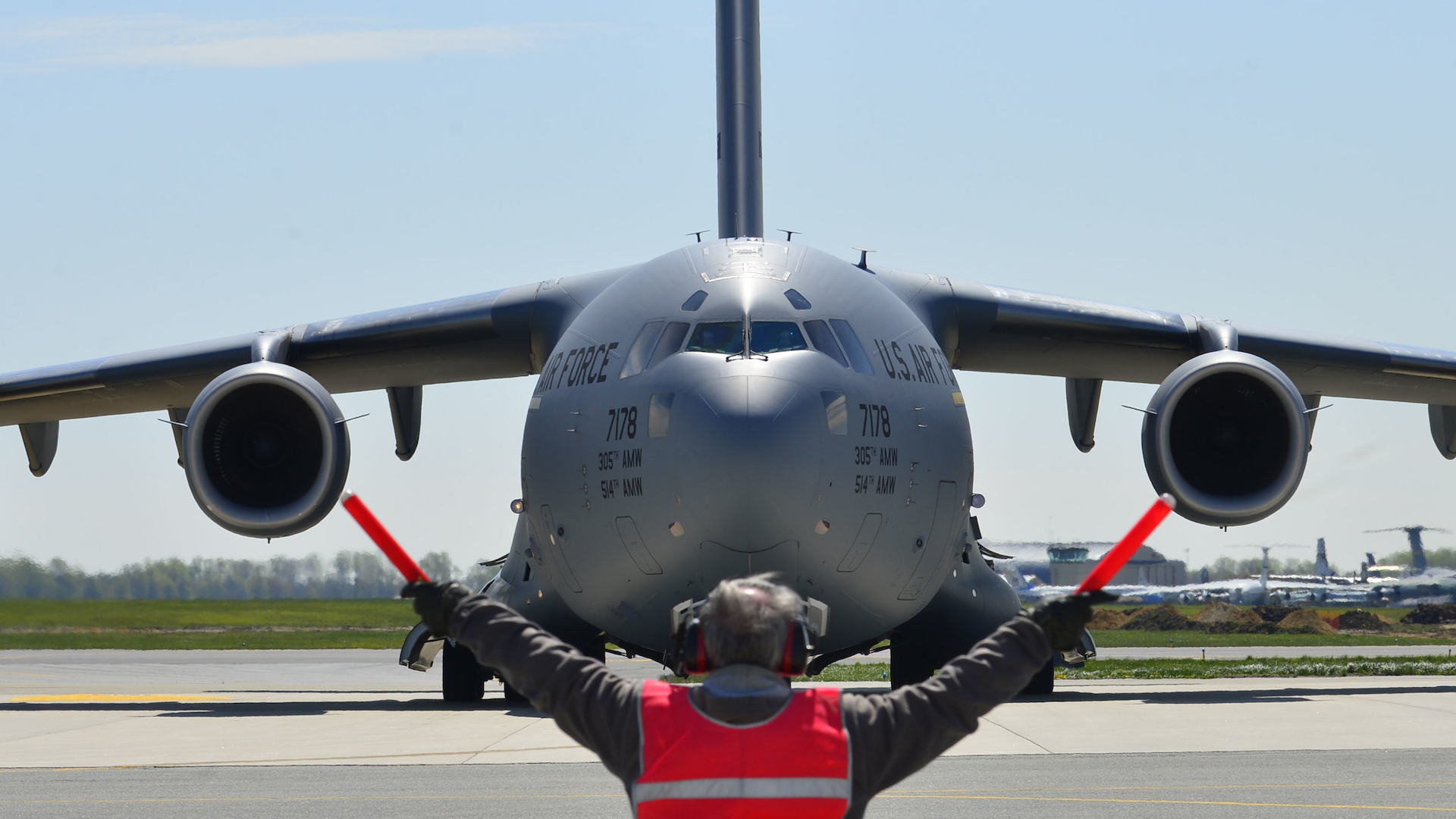Joint Base McGuire-Dix-Lakehurst in New Jersey has confirmed to The War Zone that it has countermeasures in place to deal with drone incursions, and it has recorded multiple such incidents this year. At the same time, a spokesperson has said that these past incidents relate to efforts to smuggle contraband into a federal prison within the base’s perimeter.
“Joint Base McGuire-Dix-Lakehurst has countermeasures in place to detect, respond to, and deny unauthorized drone use over our facilities, which have standing flight restrictions that prohibit unauthorized UAS operations,” base spokesperson Kitsana R. Dounglomchan, told us.
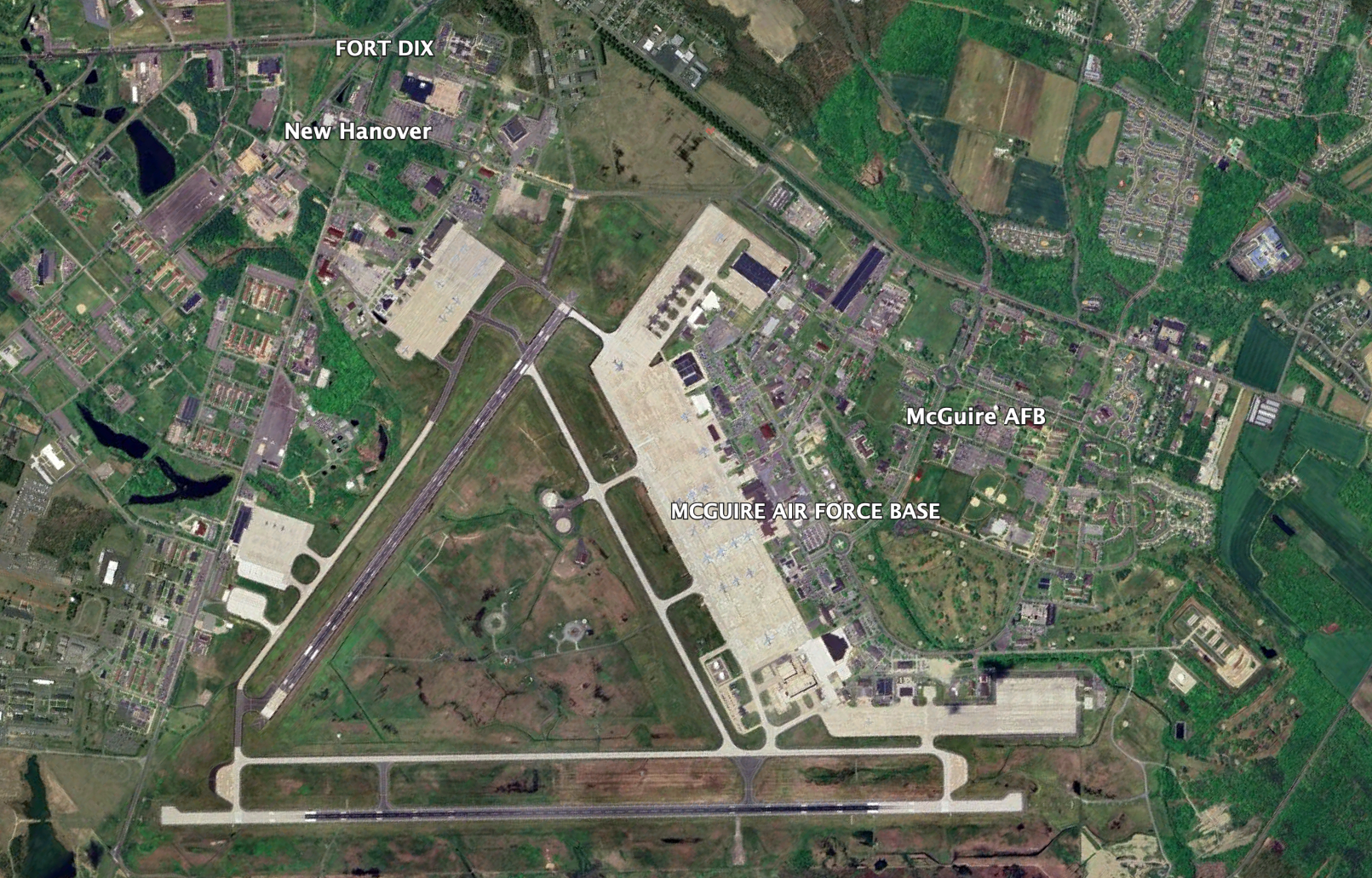
“This year, there have been multiple drone detections involving attempts to smuggle contraband into the federal correctional institution hosted on our base,” Dounglomchan added. “We take each case seriously and aggressively coordinate with local law enforcement to ensure the safety and security of our installation. The majority of the drones were intercepted or recovered.”
New Jersey has been the epicenter of an unprecedented, but still very nebulous, drone scare that has gripped the public’s attention.
The Defense Department’s only tri-service installation, the sprawling Joint Base McGuire-Dix-Lakehurst covers 42,000 acres and is home to five wings, hosted by the 87th Air Base Wing. Its flying units are primarily involved in airlift with the C-17A Globemaster III and aerial refueling with the KC-46A Pegasus. Also at the base are the shadowy C-32Bs operated by the 150th Special Operations Squadron, which are used for various clandestine airlift missions, as you can read about here, while the facility also supports unique VIP airlift missions using specially configured C-17s.
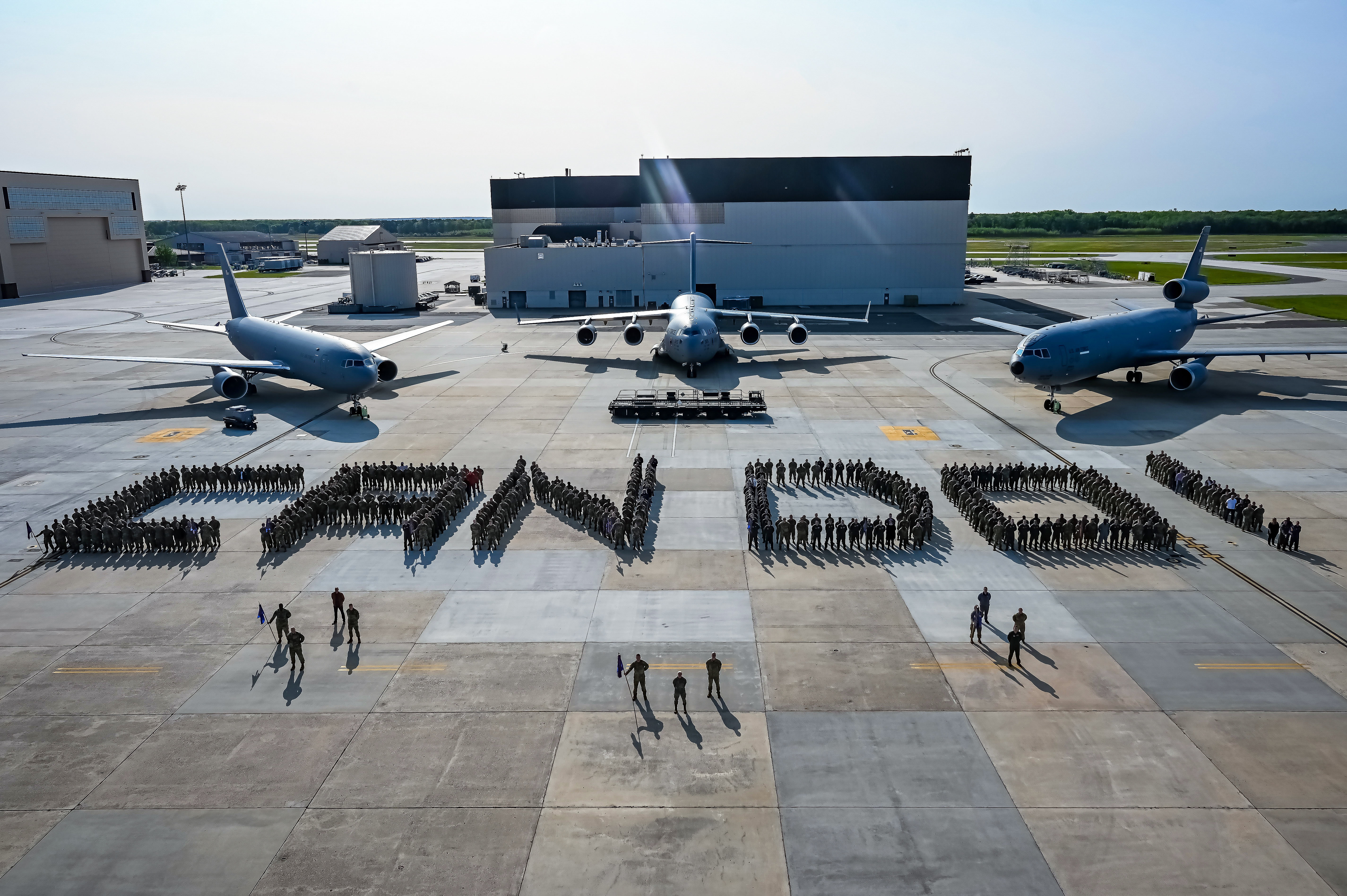
FCI Fort Dix is the largest single federal prison in the United States based on the number of inmates housed there. It’s described as a “low-security federal correctional institution with an adjacent minimum-security satellite camp.”
In the past, there have been efforts to use drones to smuggle contraband into FCI Fort Dix, including cell phones, cell phone accessories, drugs and tobacco, weight loss supplements, and various other items.
In one such case, involving an inmate at Fort Dix from April 2018 to March 2019, the U.S. Attorney’s Office, District of New Jersey said that drone drops were planned “during the late evening hours or overnight when it was dark, and the drones were less likely to be seen.” A drone pilot “flew the drones from concealed positions in the woods surrounding the prison.” The same account notes that tape was used to cover any lights on the drones to make them harder to spot.

The same Air Force spokesperson confirmed that the last such of a contraband-carrying drone took place in September of this year, with no mention of any other drone incidents since then.
The type of countermeasures in place at Joint Base McGuire-Dix-Lakehurst were not disclosed, but the need for such systems is clear, with the contraband smuggling attempts described as a “long-standing challenge.”
Earlier this year, the Pentagon announced that the base had hosted counter-UAS threat awareness training for the resident 719th Composite Truck Company, part of the New York Army National Guard. The training was described as identifying the fundamentals of Army C-UAS operations, namely “better understanding the UAS threat, understanding threat UAS employment, identifying UAS countermeasures, recognizing and reporting threat UAS, and reacting to threat UAS.” While such skills are increasingly vital for deployed operations, they would also be relevant for the defense of the base’s own airspace against drone incursions.
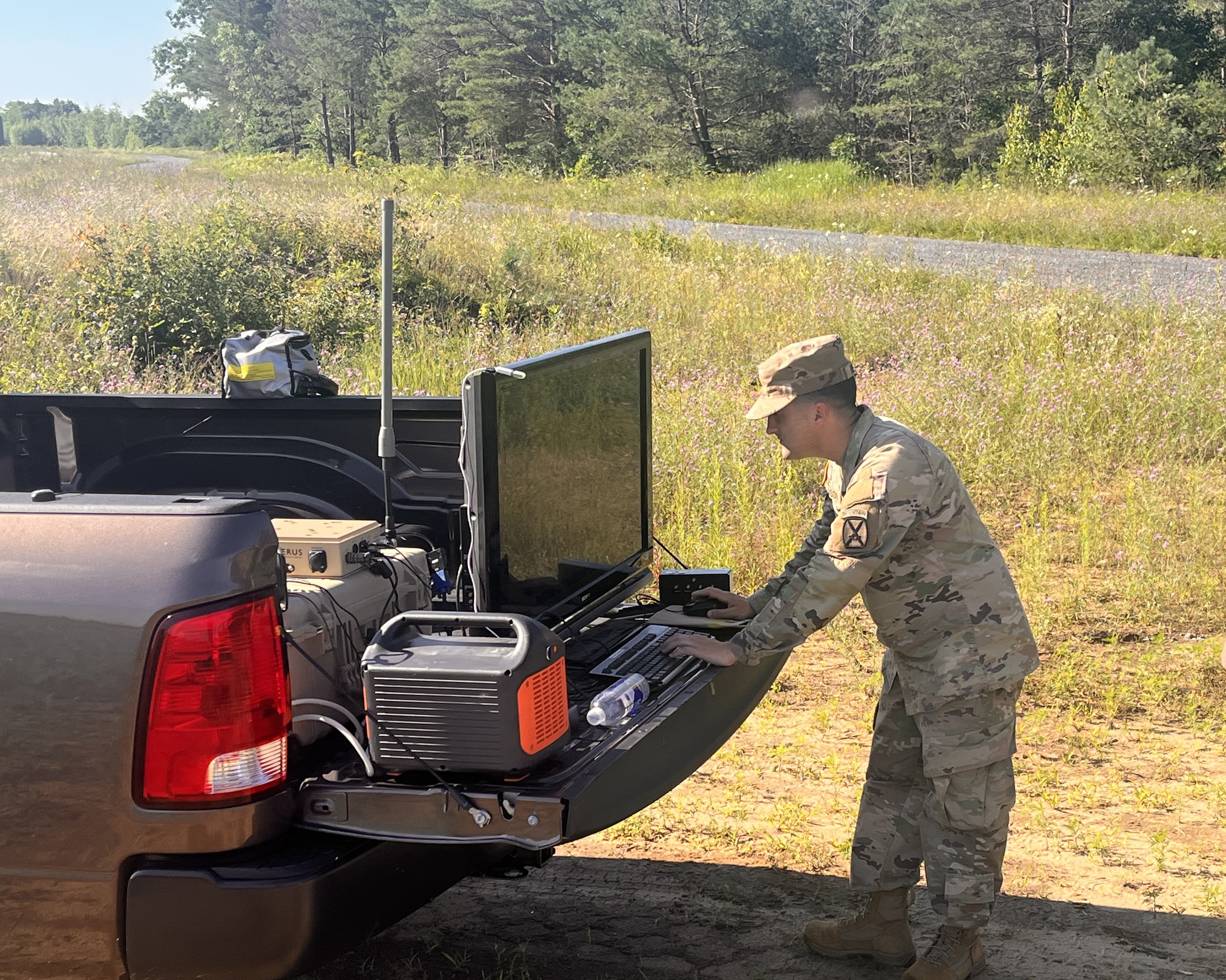
Outside of Joint Base McGuire-Dix-Lakehurst, the Pentagon has provided limited details of drone countermeasure actions that have been taken elsewhere in New Jersey, specifically at Picatinny Arsenal and Naval Weapons Station Earle.
“When we detect them, [we] attempt to classify them and take appropriate measures,” Air Force Maj. Gen. Pat Ryder told reporters yesterday, including from The War Zone.
Commanders at those other two installations “have the authority to respond appropriately, and we’ll continue to do that,” Ryder added.
“In addition to some of the capabilities that are already on these installations, these capabilities essentially will enhance a base authority’s ability to detect, identify, and track UASs,” Ryder explained. “So for example, this could include active or passive detection capabilities, plus capabilities like the system known as Dronebuster, which employs non-kinetic means to interrupt drone signals and affect their ability to operate.”
However, there are very real limitations as to what the Air Force can do in terms of dealing with domestic drone threats, with a complex set of laws and doctrines restricting how and when counter-drone systems of any kind can be employed within the homeland — something that we have explored in detail in the past. Specifically, directed energy (lasers or high-power microwave) weapons, gun systems, or missile interceptors are not cleared for use in drone incursion incidents in the United States.
Alongside these limitations, it’s worth noting the different tiered capabilities (and associated rules of engagement) that relate to the current counter-drone capabilities. This begins at the very lowest end with systems intended to increase situational awareness, typically through passive signal detection and tracking of electronic emissions. After this there are active sensors, typically radars, able to track a drone regardless of whether it is emitting radio frequency energy or not. Both passive and active systems can further be paired with electro-optical and infrared cameras to help with positive target identification. Next in the capability ladder are non-kinetic ‘soft kill’ defense options like electronic warfare, followed by directed-energy weapons like lasers and high-power microwaves, and finally more traditional kinetic effectors like drone-hunting drones, anti-aircraft guns, and even surface-to-air missiles.
Ryder later confirmed to The War Zone that the Dronebuster — a man-portable, radio-frequency jamming system — is being issued to Picatinny.
Dronebuster equipment is already in use at Joint Base McGuire-Dix-Lakehurst, as confirmed by photos showing personnel from the resident 87th Security Forces Squadron training with the devices as long ago as 2020.
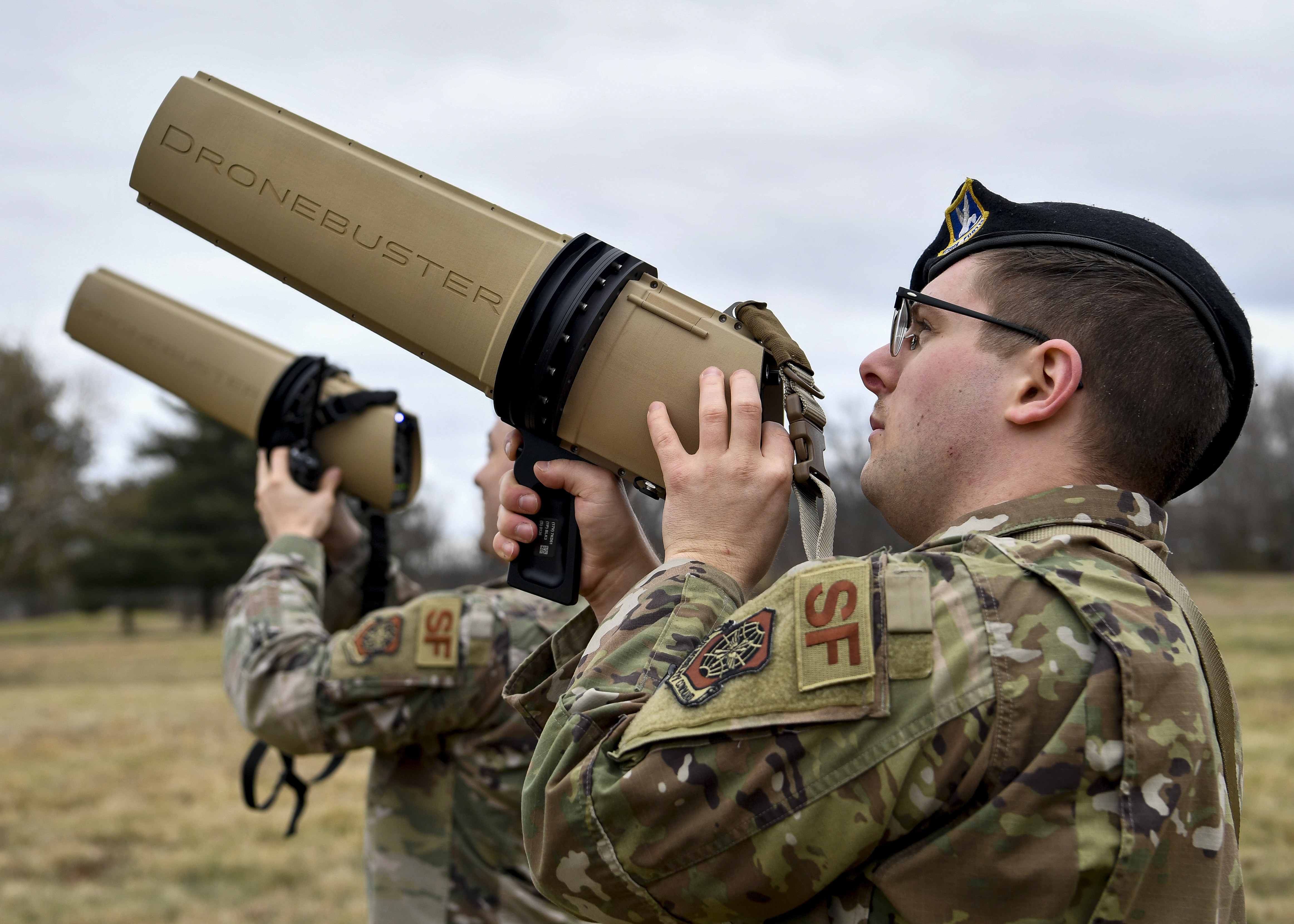
Joint Base McGuire-Dix-Lakehurst had already been mentioned in relation to the recent wave of drone sightings at bases across the country — something that has happened especially in New Jersey and other states in the northeast.
Yesterday, the base told The War Zone that pilots of 15 fixed- and rotary-wing aircraft from Joint Base McGuire-Dix-Lakehurst had reported being struck by lasers from the ground since Dec. 7. One of those pilots had to seek medical treatment but was quickly released, but all aircraft involved landed safely. NJ.com was the first to report these incidents but officials say they don’t know who fired the lasers.
What we do know is that the current hysteria around the topic — driven to a considerable degree by social media accounts and much of the mainstream media — has led to the FBI issuing a plea for people to not fire lasers or bullets at anything in the sky, whether they think it is a drone or not.

“We are seeing an increase of pilots of manned aircraft being hit in the eyes with lasers as people on the ground think they see a drone,” cautioned Nelson Delgado, Acting Special Agent in Charge of the FBI Newark Field Office, which is leading the drone investigation. “We are also concerned that people will take matters into their own hands and fire a weapon at an aircraft. Not only is this act against the law, but it poses an incredible danger to the pilots and passengers on those aircraft.”
By now, the FBI has received more than 5,000 reports of drone sightings via its drone hotline, but fewer than 100 of these merited further investigation, the bureau says. Earlier this week, the FBI — together with the Pentagon, and Department of Homeland Security — issued a statement that they have “not identified anything anomalous and do not assess the activity to date to present a national security or public safety risk over the civilian airspace in New Jersey or other states in the northeast.”
The comments provided by Joint Base McGuire-Dix-Lakehurst offer an interesting angle on the current spate of drone incursions. This is something that The War Zone has followed closely since the initial such reports emerged, including breaking the story of the first reports of drones over Picatinny Arsenal in New Jersey on Nov. 18.
In the meantime, drone incursions over other U.S. bases at home and abroad show no sign of abating, with Marine Corps Base Camp Pendleton in southern California confirming to The War Zone yesterday that it had experienced multiple such incidents over its airspace in the past several days.
In terms of U.S. military installations, Camp Pendleton joins a list of air bases in the United States that has experienced recent drone incursions, which also includes Hill Air Force Base in Utah. That installation reported drone incursions on Monday. Starting last month, drones have also appeared over four U.S. Air Force bases in the U.K., another story we first broke, and more recently also over Ramstein Air Base in Germany.
More generally, drone incursions over key U.S. bases and training ranges are nothing new, and The War Zone has been on the leading edge of covering this topic for years. TWZ broke the story of the major drone incursions over Langley AFB a year ago, which marked a major change in how the DoD was approaching this neglected threat. Other such incursions involving UAS have taken place off the U.S. coasts and, as well as military bases, key civilian infrastructure has also been visited by mysterious drones.

In the case of Joint Base McGuire-Dix-Lakehurst specifically, it’s notable that this base has long had a very specific drone problem to deal with and has addressed this — with at least some degree of success — using countermeasures that are also able to bring down these drones. The base’s experience is likely to be shared with other installations now facing similar challenges, although it seems to be the case that the New Jersey Joint Base has been dealing with consumer-type drones, which are more easily countered, while any more sophisticated types of drones will present a much tougher challenge when it comes to base defense.
Contact the author: thomas@thewarzone.com
